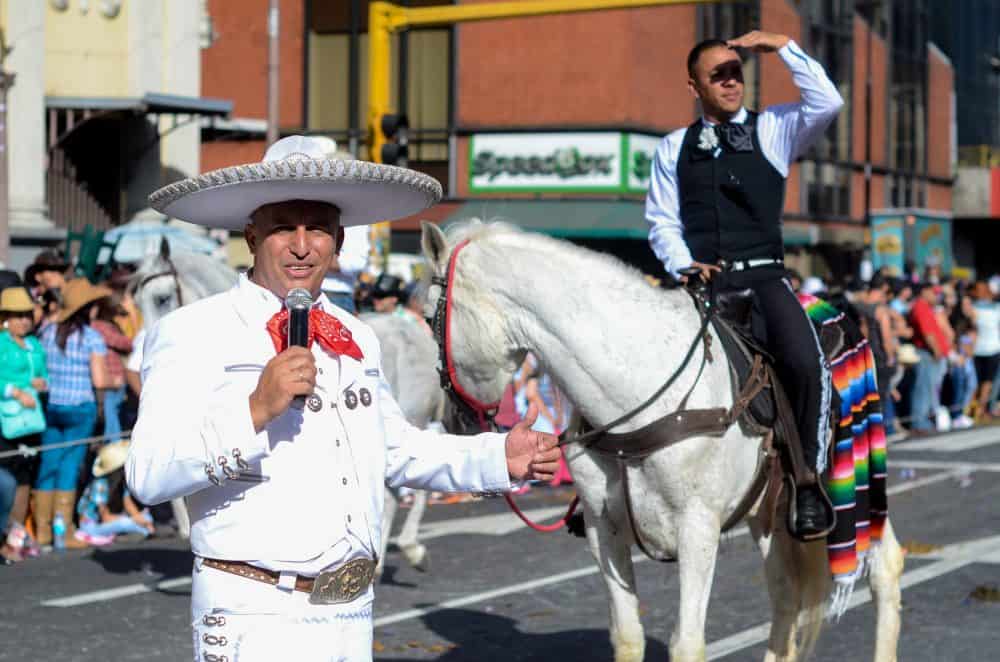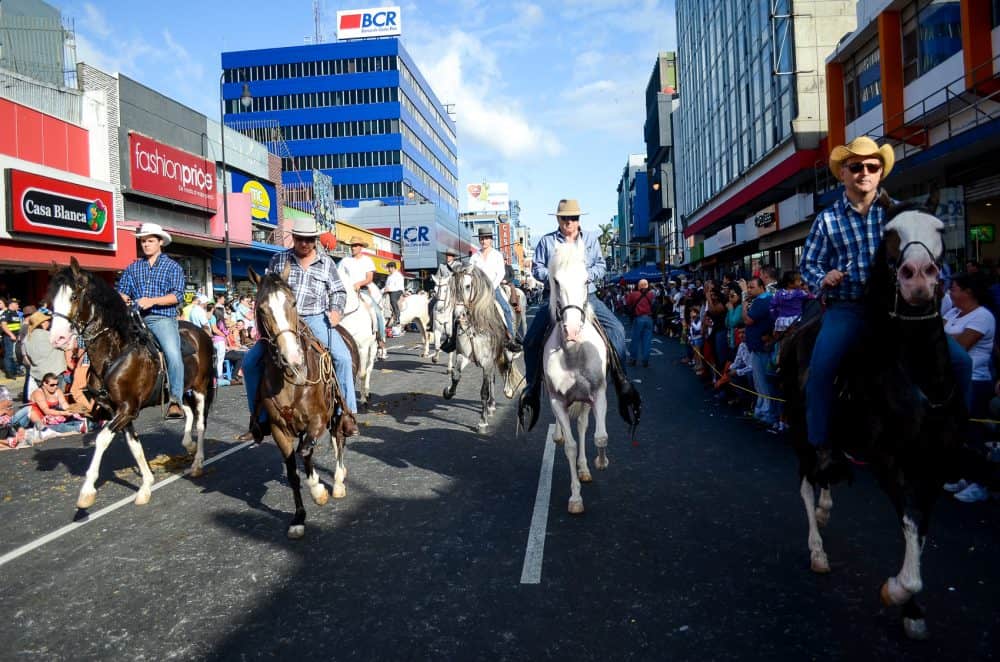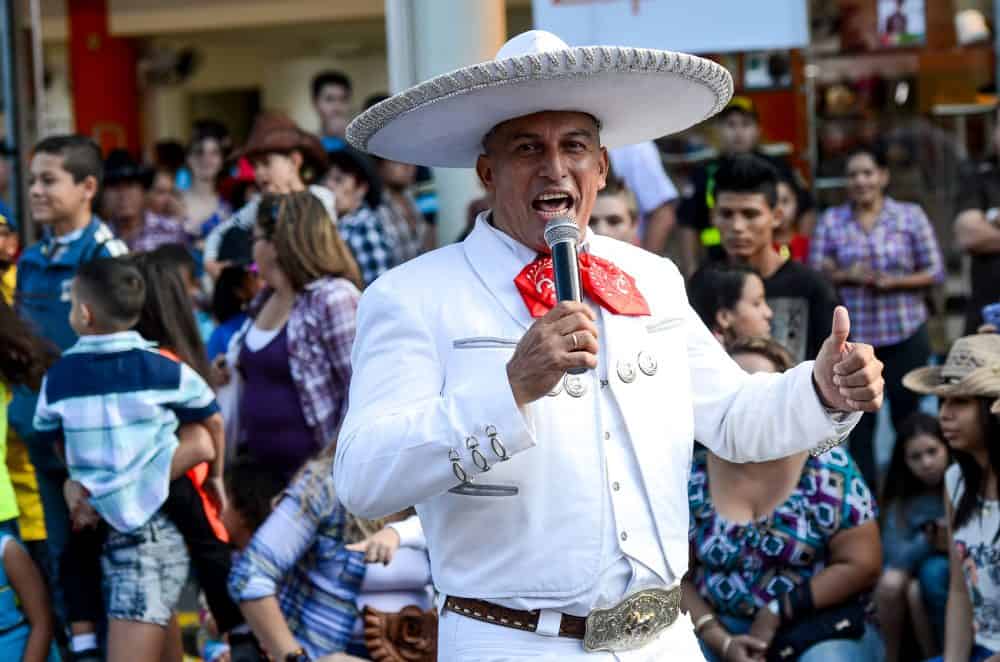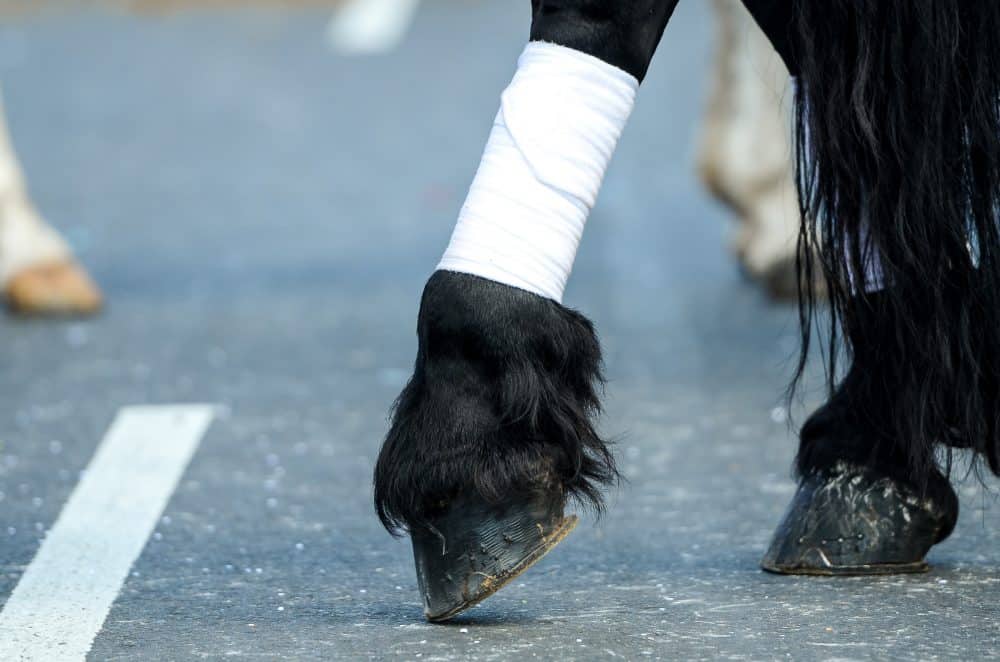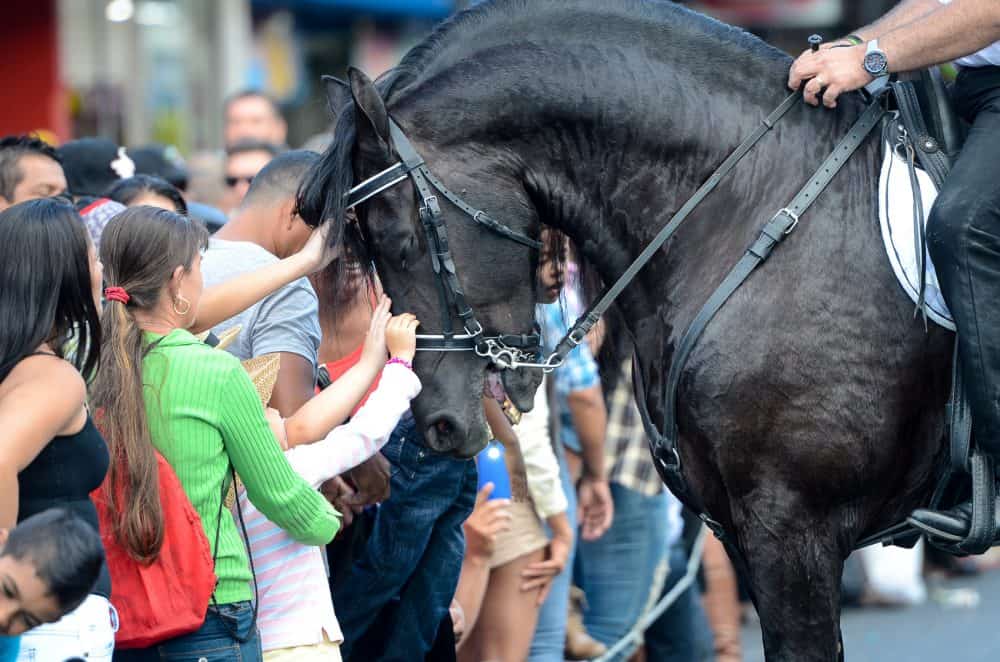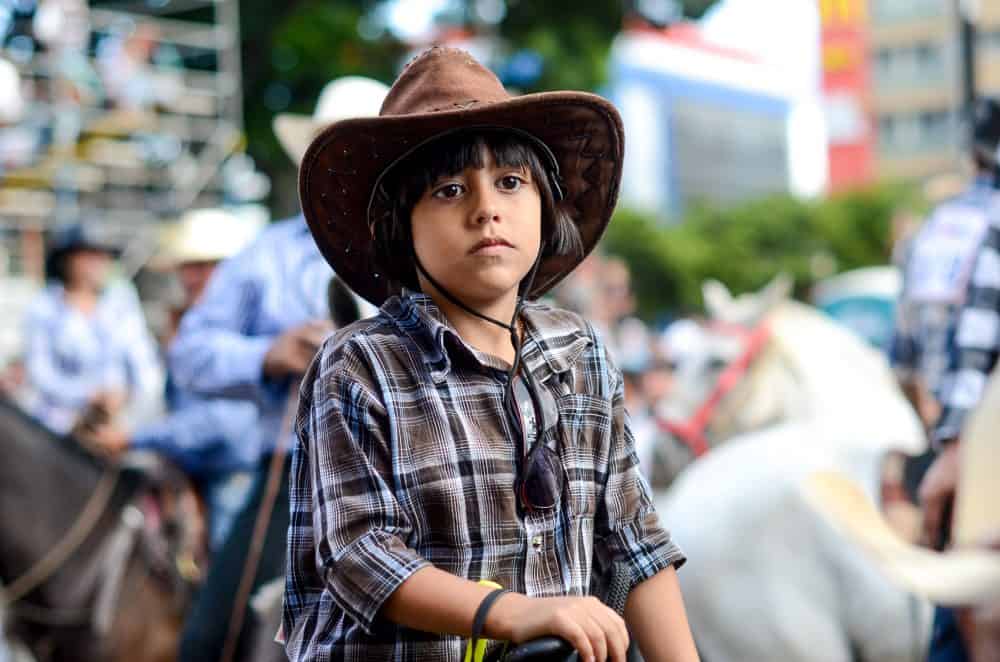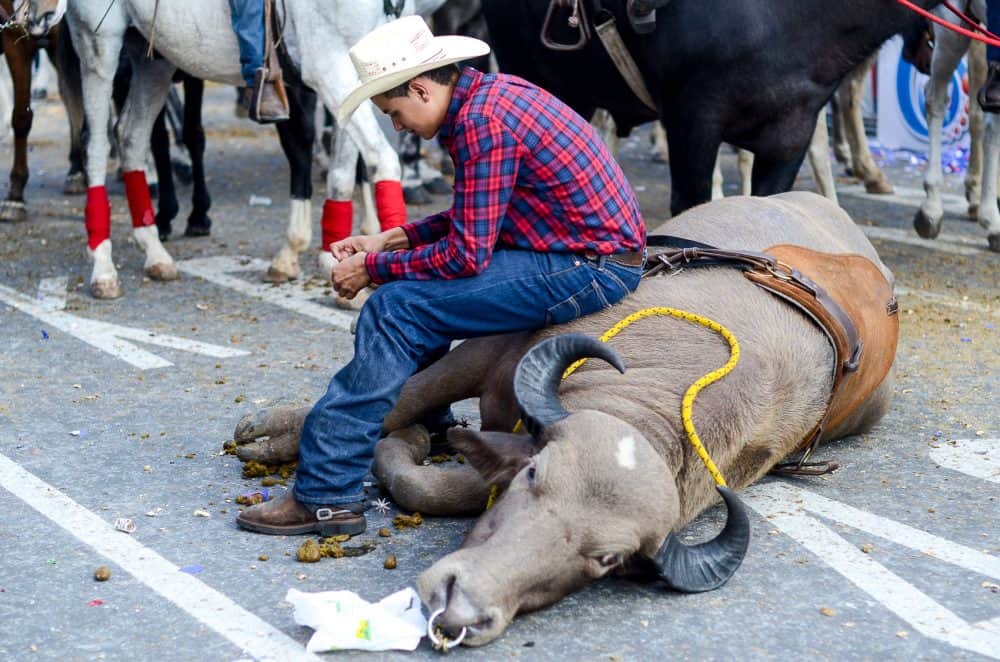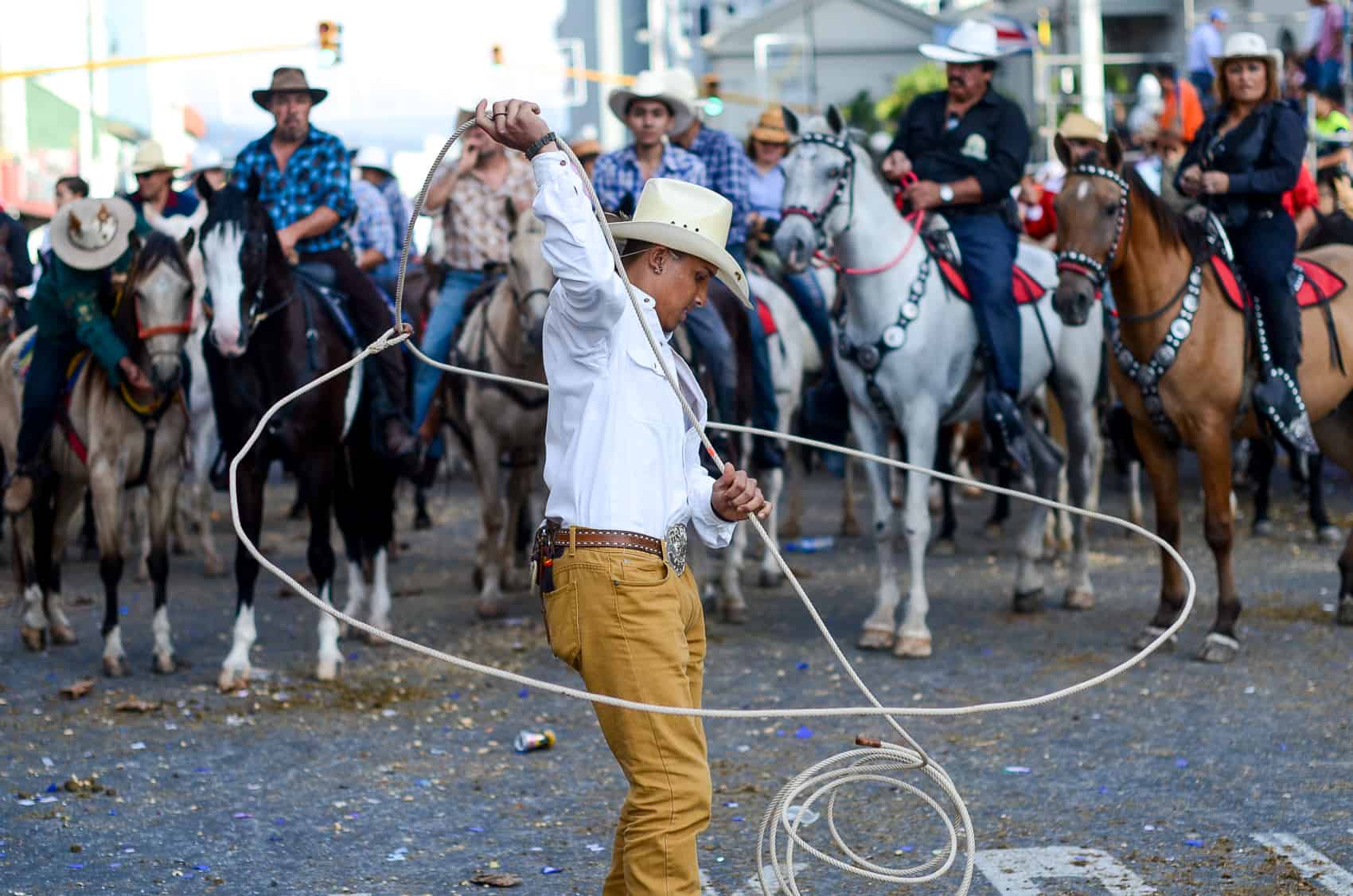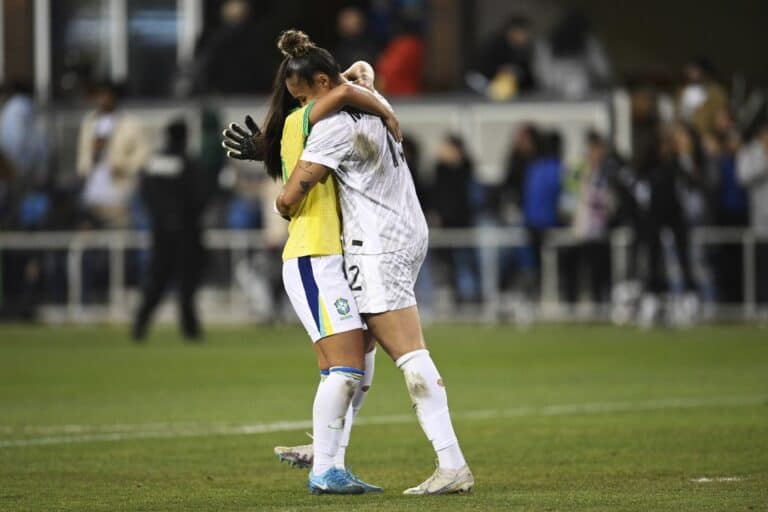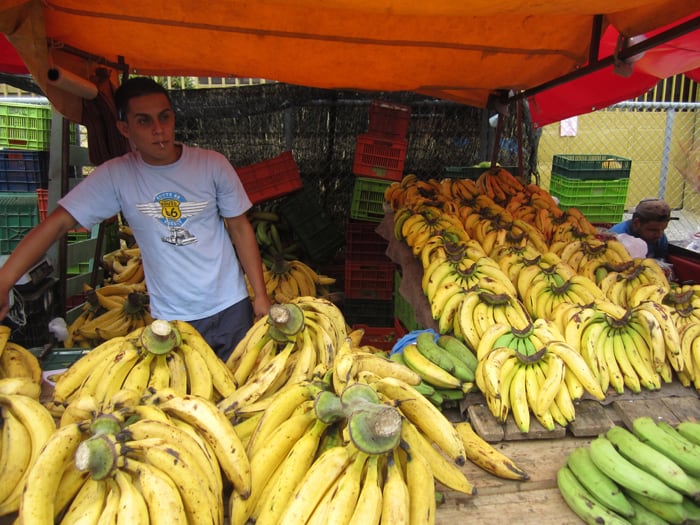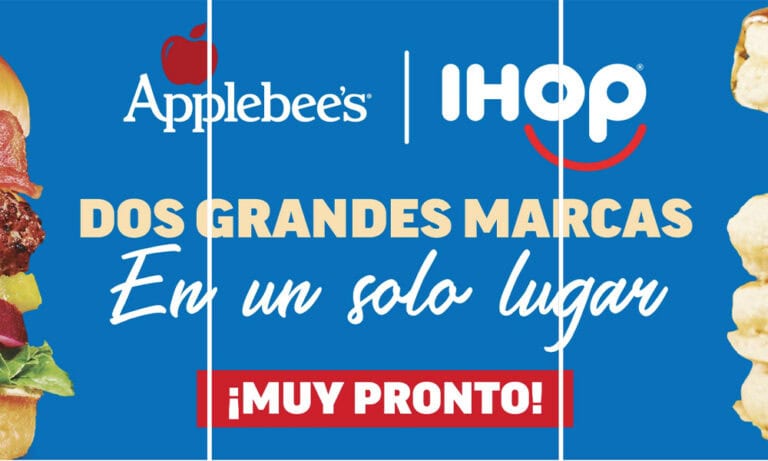More than 3,000 horse riders gathered punctually at noon on Friday to begin the 3-kilometer course of Costa Rica’s National Horse Parade, or Tope Nacional. It began at Plaza Víquez, just south of San José’s central canton. The San José Municipality organizes the parade every year on Dec. 26 to commemorate National Horse Rider Day. It is one of the favorite events held during holiday celebrations in the capital, along with the Festival of Light and the Zapote Festival.
This year’s parade marshal was Claudia Romero, a member of Costa Rica’s National Equestrian Team who on Aug. 28 fell from her horse during a competition in France. The horse died in the accident and Romero spent two weeks in a coma at a French hospital. Visibly moved from being on a horse again after four months, Romero briefly addressed participants at the beginning of the parade.
“I’m so happy to be here. I want people to realize the greatness of God, who allowed me to be here today. Believe it or not, I’m back on and feeling comfortable, and feeling alive again,” she said at the starting line at Plaza Víquez. Romero was accompanied by San José Mayor Sandra García.
Blue jeans, plaid shirts, cowboy hats and boots were the dress code for most of the riders in a parade that offered more than just horses: Water buffaloes, donkeys, mules and even a rooster participated this year. Some businesses took the opportunity to advertise their brands with trucks transporting dancing cowgirls and cowboys who entertained spectators gathered on the sidewalks, particularly along San José’s Second Avenue.
Not everyone was in a festive mood though, as Municipal Police seized merchandise from 50 unregistered vendors. Fifteen of those vendors were caught selling alcohol, which was banned by law this year. However, people improvised, using beverage coolers that also functioned as seats on the sidewalks.
Each rider paid a ₡10,000 ($19) registration fee that goes to the municipality. Half of that revenue will be given to the San José Orphanage, and the other half will fund public projects in the capital’s central canton. Towards the end of the parade, riders who didn’t pay the fee joined the t0pe, making the number of participants greater than what was officially reported.
More photos from Costa Rica’s National Horse Parade:





